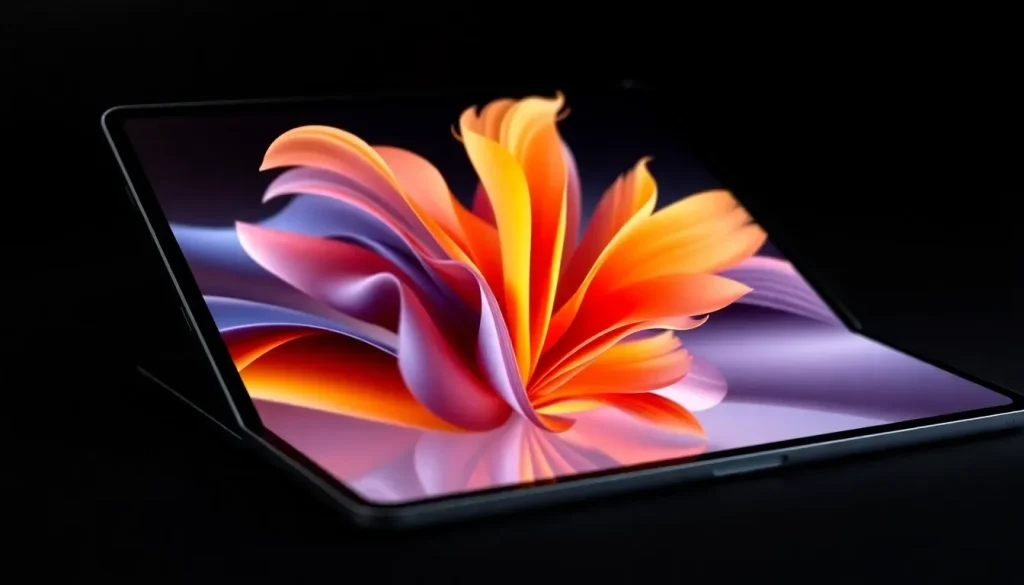Apple M5 in iPad outperforms AMD Ryzen 9 9950X3D in single-core performance

The world of mobile computing is rapidly evolving, and with it comes the competition between manufacturers to develop the most powerful and efficient processors. Apple is no stranger to this race, and its latest System on Chip (SoC), the Apple M5, promises to be a significant milestone in performance and efficiency. Emerging benchmarks indicate that this new SoC, expected to debut in the upcoming iPad Pro, is already showing impressive results. The implications of these advancements extend beyond mere numbers, as they redefine what users can expect from mobile devices.
With the Apple M5's performance revelations, technology enthusiasts and professionals alike are eager to understand how this new chip stacks up against competitors like the AMD Ryzen 9 9950X3D. Let's delve into the specifics of the Apple M5, comparing its performance metrics and exploring the new features it brings to the table.
Performance comparison of the Apple M5 SoC in Geekbench against Apple M4 Max and AMD Ryzen 9 9950X3D
In recent Geekbench tests, the hypothetical iPad Pro powered by the Apple M5 achieved a remarkable score of 4,133 points. This score places it on par with the Apple M4 Max, showcasing a significant leap in performance. Notably, the M5 demonstrates impressive speed enhancements:
- 13% faster than the Apple M4 in its 14W version.
- 10% faster than the 22W version of the Apple M4.
When comparing it to the potent AMD Ryzen 9 9950X3D, the Apple M5 still holds its ground, offering a 22% higher performance in single-core tasks. This performance underscores Apple's continued dominance in the realm of single-core CPU efficiency, even while utilizing an ARM architecture.
While Geekbench is an effective benchmarking tool, it's important to note that it does not always reflect real-world performance across different applications. For instance, the Ryzen 9 9950X3D is optimized with increased cache sizes that primarily enhance gaming experiences. Thus, in the realm of multi-core performance, the Ryzen 9 9950X3D showcases a remarkable advantage:
- Approximately 70% faster than the Apple M5 in multi-core tasks.
However, the most astonishing factor remains that the Apple M5's performance is delivered in a compact tablet form factor. In contrast, the Ryzen 9 9950X3D is typically found in high-performance desktop setups that require advanced cooling systems and higher energy consumption.
Specifications of the Apple M5 SoC
The specifications of the Apple M5 are equally impressive, as revealed through Geekbench testing. It features a 9-core processor running at 4.42 GHz, comprising:
- Three high-performance cores.
- Six energy-efficient cores.
This configuration allows the M5 to maintain a thermal design power (TDP) of just 14W, making it an efficient powerhouse. In terms of memory, the analyzed model is equipped with 12 GB of RAM and storage options ranging from 256 GB to 512 GB. Higher-end configurations are anticipated to feature:
- 16 GB of RAM for 1 TB and 2 TB storage options.
- An upgraded version of the Apple M5 with a TDP of 22W.
Upcoming iPad Pro features with the Apple M5
The new iPad Pro, featuring the M5 chip, is expected to bring a fresh design philosophy. Key anticipated features include:
- A more minimalistic design with only the Apple logo on the back, eliminating the "iPad Pro" branding.
- Incorporation of a dual front camera setup, enhancing portrait and landscape modes.
- Introduction of a Desk View feature, keeping the user's face centered during video calls.
- Enhanced Thunderbolt connectivity for better compatibility with external SSDs and high-resolution monitors.
While these improvements may not seem groundbreaking for existing iPad Pro users with the M4 chip, they represent a significant upgrade in terms of user experience and device capabilities.
The impact of Apple M5 on mobile computing
The introduction of the Apple M5 SoC signifies a critical step forward in mobile computing technology. With its powerful performance metrics and energy efficiency, the M5 is poised to redefine the capabilities of mobile devices, particularly in creative and professional fields.
As more users rely on tablets for demanding tasks, the balance between power and portability becomes increasingly vital. The Apple M5 addresses this need effectively, making it an attractive option for professionals in graphic design, video editing, and software development.
Moreover, Apple’s commitment to refining its silicon technology allows it to maintain a competitive edge over traditional x86 architectures. This evolution not only enhances the user experience but also sets a new standard for what consumers can expect from mobile devices moving forward.
As we await the official launch of the iPad Pro with the Apple M5, the excitement surrounding these advancements continues to grow. For those interested in further exploring the potential of the Apple M5 and its implications, the following video offers a wealth of insights:
Future prospects for Apple Silicon
As we look to the future, the development of the Apple M5 raises questions about the trajectory of Apple Silicon. With a continued focus on innovation and performance, Apple is likely to push the boundaries of what is possible in mobile computing.
This ongoing evolution could lead to:
- Further enhancements in machine learning capabilities.
- Increased integration between hardware and software, optimizing performance across Apple’s ecosystem.
- Potential shifts in the competitive landscape as other manufacturers strive to match or exceed Apple’s advancements.
Ultimately, the Apple M5 not only marks a significant milestone for Apple but also represents a pivotal moment in the ongoing evolution of processors designed for mobile devices, setting the stage for future innovations and user experiences that were previously unimaginable.




Leave a Reply